When Winter hits, staying in might seem like an easier (and warmer) idea than heading out. But with the right cool-weather wardrobe, you can step out prepared – rain, hail, or shine.
There are all sorts of top layers that will do the trick. From down jackets to fleece and rain jackets, these hard-working, insulated jackets will work round the clock to keep you warm and dry.
But with so many to choose from, how do you know which to choose? It all comes down to personal preference and of course, climate. Below we explore the different types of outdoor and winter jackets, features to consider and what to look for.
What are the different types of Winter jackets?
What are the different types of insulation?
What features should you look out for?
Frequently Asked Questions (FAQs)
What are the different types of Winter jackets?
If you choose the right winter jacket you could be wearing it for years to come. Think of it as a smart investment. Below we take a look at some available options to add to your seasonal wardrobe.
Insulated & Down Jackets:
Down & Insulated Jackets (often known as puffer jackets) are identified by their quilted design filled with down or synthetic insulation.
They can provide excellent warmth, without the added weight like other jackets. Depending on the material, they may be water-resistant using a DWR (durable water-repellent) coating, so it's a good idea to check before you buy.
Suitable for: Being lightweight, but highly insulating, they're popular for outdoor activities in cold weather.
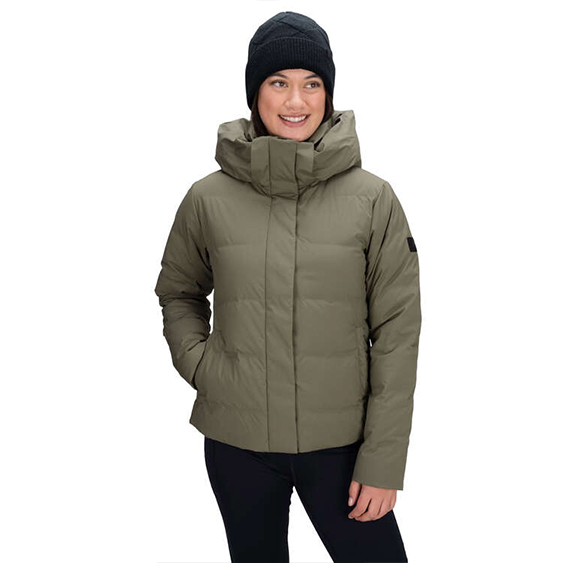
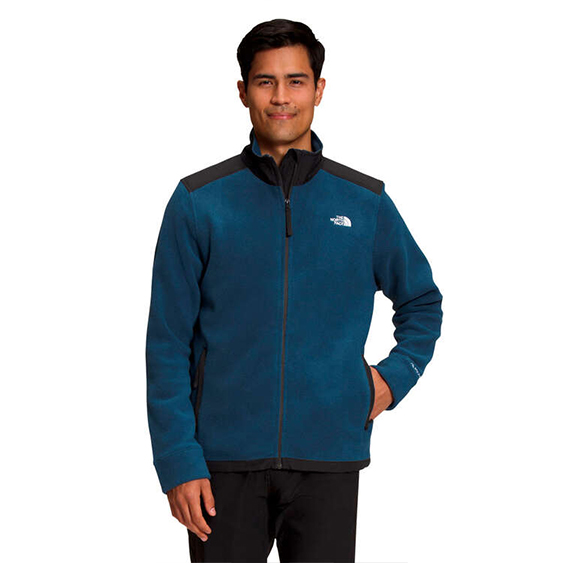
Fleece Jacket:
Fleece jackets are made from synthetic or a blend of natural and synthetic materials and are known for their softness and warmth. While not typically waterproof, they provide excellent insulation and breathability, making them suitable for layering or milder Winter conditions.
Suitable for: Mild to cool weather and often worn on walks and hikes.
Softshell Jacket:
A softshell jacket is designed for active outdoor pursuits. Unlike traditional hard-shell jackets, softshell jackets are made from stretchy, breathable, and water-resistant materials, providing enhanced flexibility and comfort during activities like hiking, climbing, or skiing.
Suitable for: Ideal for outdoor activities in mild to moderate weather conditions.
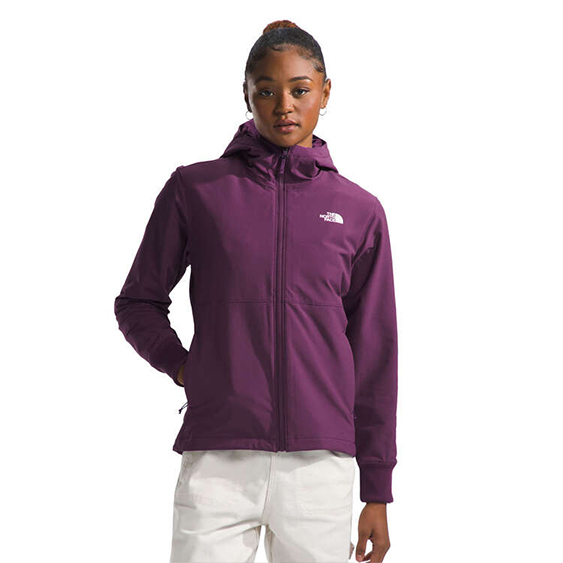
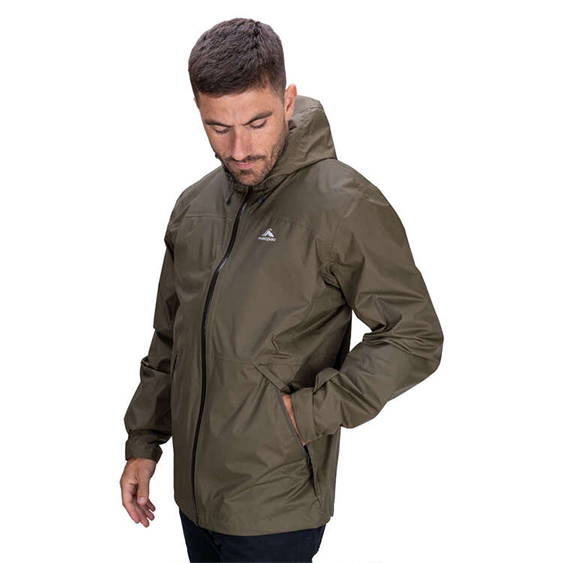
Rain Jacket:
A rain jacket is specifically designed to shield you from rain and moisture. Constructed from waterproof or water-resistant materials such as nylon or polyester, rain jackets feature sealed seams and often have a DWR coating to repel water effectively.
Suitable for: Anyone wanting to be dry from rain!
Running Jacket:
A running jacket (often known as a training jacket) is lightweight and breathable and designed to provide protection and comfort during a run or training activities.
Constructed from moisture-wicking and quick-drying materials, running jackets are designed to keep runners dry and comfortable by efficiently wicking away sweat. They often feature strategic ventilation panels or mesh inserts to enhance breathability and regulate body temperature, while reflective elements are frequently used to help with visibility in low-light conditions.
Suitable for: Anyone wanting light warmth whilst running or working out, without the added weight.
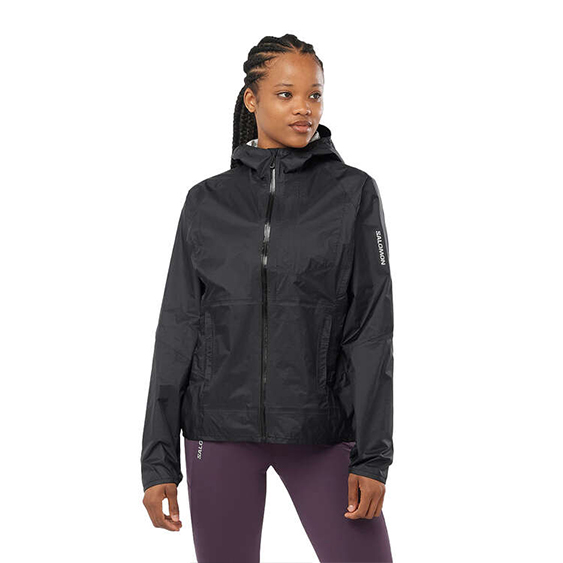
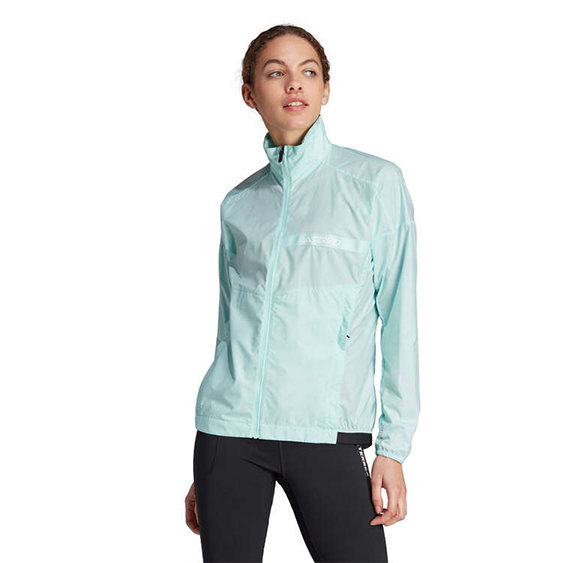
Windbreaker:
A windbreaker jacket is lightweight and designed to shield you from wind and light rain. Made typically from synthetic materials such as nylon or polyester, windbreakers are known for their excellent wind resistance while remaining breathable and comfortable.
Suitable for: A range of outdoor activities in variable weather conditions.
Known for its warmth and often featuring a hood lined with fur or faux fur, parkas are long, insulated jackets that provide excellent protection against cold weather. They often have multiple pockets and a longer length for added coverage.
Suitable for: Anyone wanting a longer style jacket for extra warmth, but not necessarily needing a waterproof jacket.
Parka:
Known for its warmth and often featuring a hood lined with fur or faux fur, parkas are long, insulated jackets that provide excellent protection against cold weather. They often have multiple pockets and a longer length for added coverage.
Suitable for: Anyone wanting a longer style jacket for extra warmth, but not necessarily needing a waterproof jacket.
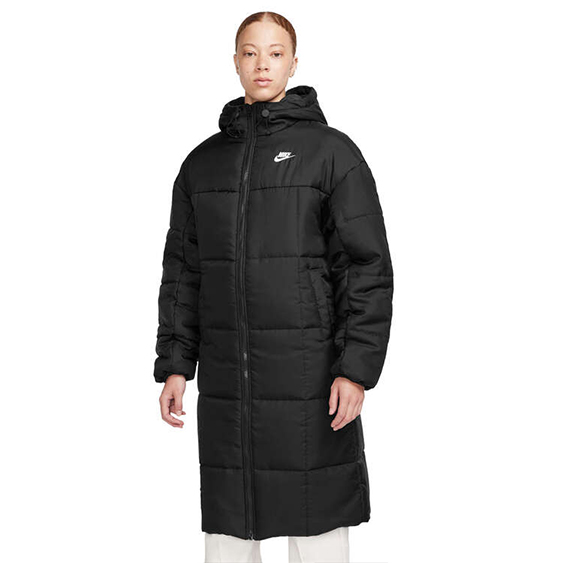
Look at Insulation Type
Decide between down (used in puffers) and synthetic insulation based on factors like warmth, weight, and moisture resistance. Down provides excellent warmth-to-weight ratio and compressibility and performs well in cold and dry conditions, while synthetic insulation performs better when wet.
So, if you're looking for a jacket to keep you warm and dry during the rainy season, you may want to opt for a synthetic-made jacket.
Down Jackets
How do you know if a puffer jacket is warm enough? You'll want to check the fill power rating.
Check Fill Power
Wait, what does fill power mean? Basically, it's a measurement used to describe the quality and loftiness (the fluffiness) of the down used.
The higher the fill power, the better the insulation's ability to trap warm air and provide more warmth with less weight. Generally, fill power typically ranges from around 400 to 900 or more, with a quality down jacket generally being 600 or higher.
But let's break it down:
- Low Fill Power (400-550): Jackets with lower fill power down are usually less expensive but provide less warmth for their weight. They're suitable for mild to cool weather but may not be sufficient for very cold conditions.
- Mid-Range Fill Power (550-750): Jackets with mid-range fill power down offer a good balance of warmth, weight, and affordability. They're suitable for a wide range of temperatures and activities.
- High Fill Power (750+): Jackets with high fill power down provide an excellent warmth-to-weight ratio, making them lightweight, compressible, and highly insulating. They're ideal for cold climates, high-altitude activities, and situations where minimising weight and bulk is crucial.
Keep in mind that fill power is just one factor to consider when looking at the warmth of a puffer. Other factors such as the amount of insulation (fill weight), construction, and design are also important.
What features should you look out for?

When deciding on what type of jacket you want (and need), its features are a big deal. Some come with hoods while others might have chin flaps to keep you extra toasty on cold days.
We've rounded up some top considerations to help find a jacket that meets your needs and preferences.
Water Resistance or Waterproof
If you're planning to wear your jacket in wet conditions but don't fancy the rain hitting your clothes or worse, skin, then it's a good idea to consider jackets with a durable water-repellent (DWR) finish or water-resistant outer shell.
Some jackets also have waterproof (highest level of rain protection) membranes for added protection against rain or snow.
Hood and Chin Flap
It's a good idea to decide if you need a jacket with a hood for extra warmth and protection from the outside elements. You might want to consider whether you want an adjustable hood or a jacket with a chin flap so it can be cinched tight around your face during windy or cold conditions.
Pockets
Looking for extra storage? Or maybe just a spot to keep your hands warm? When looking at jackets consider the number and placement of pockets. Jackets with zippered hand pockets and a fleece lining will keep your hands warm and secure your belongings. Some jackets also have interior pockets for extra storage.
Cuffs and Hem
Look for jackets with adjustable cuffs and hems to seal out cold air and trap heat inside the jacket. Elastic cuffs and drawstring cords allow you to customise the fit for added comfort.
Zippers
Pay attention to the quality of the zipper. Look for jackets with durable, YKK or similar high-quality zippers that glide smoothly and won't snag or break easily.
Weight and Packability
If you need a jacket for travel or outdoor activities, consider the weight and packability of the jacket. If this is important to you, look for jackets that compress down into a compact size for easy storage in a backpack or suitcase – some will even pack down into their pocket, clever!
If you'll be wearing it for extended periods or engaging in outdoor activities like hiking or skiing, lighter jackets are more comfortable to wear and easier to pack.
Style and Fit
While features are very important, choosing a jacket that matches your style and fits well is also important. Consider factors like length (long, short, cropped), type (jacket, coat, or vest), and colour to ensure the jacket complements your wardrobe and body shape.
By considering these features, you can find a puffer jacket that suits your needs and keeps you warm and comfortable in cold weather.
FAQs
What's the difference between Down and Synthetic puffer jackets?
Puffer jackets are typically made of lightweight, synthetic, or natural materials designed to provide insulation and protection from cold weather. The outer shell of the jacket is often made from nylon or polyester, which is durable, water-resistant, and windproof.
Down insulation is made from the soft, fluffy plumage of ducks or geese, prized for its excellent warmth-to-weight ratio and compressibility. Some would say that goose down is the gold standard for warmth-to-weight performance and superior durability, which may be reflected in the price tag too.
Synthetic insulation, on the other hand, is made from polyester fibres designed to mimic the properties of down, providing warmth even when wet and offering better affordability for those concerned about allergies or animal welfare.
Are puffer jackets warmer than wool?
Puffer jackets and wool coats offer different types of warmth, each suited to different climates and preferences. Puffer jackets, filled with down or synthetic insulation, excel at trapping body heat and are excellent at keeping you warm in cold conditions.
On the other hand, wool coats offer natural insulation and are renowned for their ability to retain heat even when wet. Wool fibres have fundamental insulating properties, providing warmth by trapping air pockets within the fabric.
While both puffer jackets and wool coats are effective at keeping you warm, the choice between them often depends on personal preference, climate, and the specific activity or occasion.
Should you size up in a jacket?
Whether or not to size up in a jacket depends on personal preference and the specific style and fit of the jacket. But in most cases, sizing up may be beneficial for comfort and if you plan to wear thick layers underneath or prefer a looser fit.
If you fall between sizes or if the jacket tends to run small, sizing up can ensure a better fit. Ultimately, it's essential to try on the jacket and consider factors such as layering, comfort, and intended use before deciding whether to size up or stick with your usual size.
Can you wash Winter jackets?
Yes, as a general rule, you can wash winter jackets and puffer jackets made from materials like nylon, down, and fleece, but it's important to do it right so you don't damage the materials and insulation.
Before washing, always check the care label on the jacket for specific instructions, as different jackets may require different care methods.
When washing, use a gentle cycle with cold water and a mild detergent to help preserve the jacket's fabric and insulation.
Avoid using bleach or harsh chemicals, as they can damage the jacket. After washing, air dry the jacket flat on a clean towel or hang it on a hanger to prevent misshaping.
Avoid wringing out the jacket, as this can damage the insulation. If you have a puffer jacket, once dry, fluff the jacket gently by hand to restore its loft.
So, which will you choose?
Check out the entire range of jackets for men, women & kids online, or head in-store to speak to one of our friendly rebel staff who will help find the right style, warmth and fit for you.